- H-23/ B Abul Fazal Enclave, New Delhi - 110025, INDIA
Call Us (Indian)
(+91 ) 7827791242
Call Us (International)
(+91 ) 7827791242
Email Us
info@globlaregenex.com
(+91 ) 7827791242
(+91 ) 7827791242
info@globlaregenex.com
Athletes frequently sustain muscle injuries, which are frequently brought on by overuse, strain, or direct collision. These injuries, which range in severity from minor sprains to major rips, have a substantial effect on healing and function. Effective treatments are often sought after by athletes in order to reduce downtime and hasten rehabilitation. PRP therapy, or platelet-rich plasma, has drawn interest as a potentially effective treatment.
Pain, bruising, swelling, restricted range of motion, and muscular weakening are common signs of muscle injuries. Depending on the extent of the injury, different treatments are used, however in order to promote healing and stop recurrence, anti-inflammatory drugs, physical therapy, and rest, ice, compression, and elevation (RICE therapy) are frequently used. In severe circumstances, surgery can be necessary to mend damaged tendons or muscles.
A concentrated dosage of platelets is extracted from the athlete’s own blood and injected into the affected muscle as part of the PRP therapy. Growth factors and other bioactive materials found in platelets aid in tissue regeneration and repair. PRP treatment is intended to hasten the healing process, lessen inflammation, and improve overall recuperation in the setting of muscle injuries.
Athletes may sustain different kinds and levels of muscle injuries, based on their particular circumstances, training volume, and sports-specific elements like imbalances in their muscles and biomechanics. Athletes frequently suffer from the following kinds of muscle injuries:
Strains: Strains are caused by the tearing or stretching of tendons or muscle fibers. Three grades are assigned to them:
Grade I: Mild strain with little to no ripping of the muscle fibers
Grade II: Severe strain that results in some muscle fiber tears and more severe pain and dysfunction.
Grade III: Severe strain with total tendon or muscle tearing that causes severe discomfort and loss of function.
Sprains: Although they are more frequently linked to ligaments, sprains can also impact muscles. A muscle sprain happens when an overuse or excessive force stretches or tears a muscle or tendon.
Contusions: Also referred to as bruises, contusions are caused by blunt force trauma to the muscles and blood vessels, which causes internal bleeding and inflammation.
Muscle Cramps: These are abrupt, uncontrollably occurring contractions of one or more muscles. They are frequently brought on by electrolyte abnormalities, dehydration, exhaustion, or inadequate training.
Tendonitis: Inflammation of a tendon, which joins muscle to bone, is known as tendinitis. Overuse, repeated actions, or abrupt increases in training intensity can all cause it.
Muscle Spasms: A muscle or group of muscles will suddenly and uncontrollably contract. Dehydration, electrolyte imbalances, muscular exhaustion, and nerve irritation are some of the possible causes.
Compartment Syndrome: Increased pressure within a muscular compartment causes compartment syndrome, a disease that lowers blood flow and nerve function. Either chronic usage or recent trauma can cause it.
Avulsion Injuries: Avulsion injuries happen when a ligament or tendon separates from the bone where it is attached, frequently as a result of a quick, violent motion.
Tears or Ruptures in the Muscle: A tear or rupture in the muscle is a whole or partial rupture in the muscle. Overstretching, unexpected shock, or repetitive stress can all result in these ailments.
Knowing what causes muscle injuries in athletes enables the development of focused preventative measures, such as thorough conditioning regimens, injury screening, biomechanical evaluations, and instruction on safe training methods and recuperation schedules. Given below are some common causes for muscle injuries in athletes:
Overuse: Overuse injuries can result from repeatedly stressing muscles without enough time for rest and recuperation. Without appropriate periodization, athletes who exercise at high volumes or high intensities run the risk of injury.
Poor Conditioning: Muscle injuries might be more likely to occur when there is insufficient strength, flexibility, and endurance. Athletes are more vulnerable to injury due to aberrant biomechanics and compensatory motions caused by weak, tight, or imbalanced muscles.
Sudden Impact or Trauma: Muscle contusions, strains, sprains, and rips can result from direct strikes, falls, collisions, and other traumatic occurrences. Traumatic muscle injuries are more common in contact sports like football, rugby, and hockey.
Improper Technique: Excessive force on muscles can result in strain and injury due to improper body mechanics, poor form, and inappropriate movement patterns. Injury prevention requires effective coaching, technique correction, and skill improvement.
Muscle Fatigue: Due to decreased neuromuscular control, coordination, and proprioception, fatigued muscles are more prone to injury. Muscle fatigue and an elevated risk of injury can result from prolonged or severe activity without sufficient recovery time.
Biomechanical Factors: An irregular pelvic alignment, foot pronation, and leg length discrepancies are examples of structural anomalies that can change biomechanics and raise the risk of muscular injuries. Injury risk can be decreased by addressing these variables using orthotics, corrective workouts, and biomechanical analysis.
Inadequate Warm-Up or Cool-Down: The risk of muscular injury can be raised by inadequate warm-up prior to activity and inadequate cool-down following it. Increased blood flow, flexibility, and joint mobility during warm-up exercises prime the muscles for action, while cooling down afterwards aids in recovery and lessens stiffness in the muscles.
Environmental factors: Elevations, topography, humidity, and temperatures too high or too low can all have an impact on sports performance and raise the possibility of muscle injury. Important factors to take into account include hydration, acclimatization, and modifying training intensity according to the climate.
Equipment problems: Wearing out clothing, inappropriate sports equipment, and ill-fitting shoes can all lead to muscular strains by changing the way muscles move, creating friction, or offering insufficient support. Injuries can be avoided by using the right equipment and making sure it is maintained properly.
Depending on the kind and extent of the injury, athletes may have different symptoms from muscle strains. These are a few typical symptoms:
Pain: The most noticeable sign of a muscle injury is typically pain. Depending on the amount of the damage, the pain’s location and intensity may change.
Swelling: After a muscular injury, swelling frequently results from inflammation. It might be limited to the site of the injury and be accompanied by redness and warmth.
Bruising: Bleeding inside the muscle tissue or surrounding blood vessels can cause bruising, or discolouration of the skin, in the afflicted area.
Weakening: Loss of strength or muscular weakening can occur, particularly in cases of more serious muscle injuries. This weakness may impair function and mobility.
Stiffness: In the immediate aftermath of an accident, a damaged muscle or joint may become stiff or have restricted range of motion.
Tenderness: When pressure is applied or during movement, the damaged muscle may feel sensitive to the touch.
Muscle Spasms: Uncontrollably contracted muscles can sometimes result in abrupt, intense discomfort and transient tenseness in the muscles.
Difficulty Moving: If an athlete sustains a major injury or has substantial pain or swelling, they may find it difficult to move the damaged muscle or joint.
Cramping: As a result of muscular exhaustion or irritation, muscle cramps or spasms can happen, especially during or after exercise.
A combination of the patient’s medical history, physical examination, and diagnostic testing is usually used to diagnose muscle injuries in sports. This is a synopsis of the diagnostic procedure:
The use of platelet-rich plasma (PRP) therapy in the treatment of sports injuries to the muscles has increased. PRP treatment is primarily used for muscle injuries in the following ways:
Acute Trauma: PRP therapy might help minimize the risk of problems like hematoma development, reduce inflammation, and speed up the healing process in cases of acute trauma resulting in bruises or muscle contusions.
Rehabilitation: By encouraging tissue regeneration, speeding up healing, and enhancing functional results, PRP treatment may be used in conjunction with conventional rehabilitation regimens for muscle injuries. It can be incorporated into an all-encompassing treatment program along with physical therapy, rest, and a cautious return to exercise.
Recalcitrant Cases: PRP therapy may be taken into consideration as an alternate or complementary treatment option to boost the healing response and speed recovery in certain situations when conservative therapies have not been able to give sufficient alleviation or functional improvement.
Treatment for injuries is increasingly being considered as a first option for a number of illnesses, including muscle injuries in athletes. If you are receiving treatment from Global Regenx, the following procedures will take place over the course of three days:
Day 1:
Day 2:
Day 3:
Something To Keep In Mind
What are the typical reasons why athletes suffer muscle injuries?
Athletes may get muscle injuries as a result of overuse, inadequate training, abrupt shock or impact, incorrect technique, biomechanical problems, environmental influences, and equipment malfunctions.
What signs and symptoms do athletes usually experience after a muscle injury?
Athletes frequently experience pain, bruising, swelling, weakness, stiffness, discomfort, muscular spasms, trouble moving, and a popping feeling as a result of muscle injuries.
How do athletes with muscular injuries get diagnosed?
A patient’s medical history, physical examination, and diagnostic imaging procedures including MRIs, X-rays, and ultrasounds are often used to make the diagnosis of muscle injuries. Lab testing and functional evaluation can also be used.
What alternatives are there for treating athletes’ muscular injuries?
Athletes that suffer from muscular injuries can be treated with rest, ice, compression, elevation (RICE), physical therapy, rehabilitation exercises, anti-inflammatory drugs, heat or ultrasound therapy, and in certain situations, surgery. In some circumstances, platelet-rich plasma (PRP) therapy may also be taken into consideration as a therapeutic alternative.
When compared to conventional treatment methods, platelet-rich plasma (PRP) therapy provides a number of possible advances in the management of muscle injuries in athletes:
Faster Healing: PRP treatment increases the growth of mesenchymal stem cells, endothelial cells, and fibroblasts, which in turn promotes tissue regeneration and repair. This causes muscular injuries to recover more quickly, which might hasten the athlete’s return to competition.
Decreased Inflammation: The anti-inflammatory properties of PRP treatment aid in the reduction of inflammation in the damaged muscle tissue. PRP has the ability to improve tissue healing conditions by regulating the inflammatory response and preventing pro-inflammatory cytokine activity.
Minimally Invasive: PRP therapy involves little more than a simple injection into the affected muscle tissue, and it is often done as an outpatient procedure. As a result, less invasive surgical procedures are required, and athletes may return to training and competition sooner.
Autologous Nature: PRP treatment reduces the possibility of rejection or unfavorable responses by using the patient’s own blood plasma. PRP treatment safely and biocompatiblely stimulates tissue repair and regeneration by utilizing the body’s own healing capabilities.
Customized Care: PRP therapy may be adapted to the athlete’s unique requirements and the particulars of the muscle issue. Treatment results can be optimized by adjusting the concentration of platelets and other components in the PRP solution according to the kind and degree of the injury.
Possibility of Long-Term Benefits: PRP treatment has the potential to increase function and induce tissue remodeling in addition to promoting short-term healing. Proleptin-based platelet-rich plasma (PRP) treatment has the potential to improve the structural integrity of damaged muscle tissue and lower the likelihood of further injuries by inducing the body to produce more collagen and elastin.
Supplementary to Rehabilitation: By encouraging tissue repair, lowering pain and inflammation, and improving the efficacy of rehabilitation activities, PRP treatment can support conventional rehabilitation regimens. The athlete’s recuperation and rehabilitation process can be enhanced by this comprehensive strategy.
Tailored Care: PRP therapy enables tailored care and treatment strategies according to the particular needs, goals, and condition of the athlete. Healthcare professionals may collaborate closely with athletes to create individualized treatment programs that target specific issues, maximize recuperation, and enable a return to competition.
When it comes to treating muscle injuries, platelet-rich plasma (PRP) therapy works through a number of important mechanisms:
Growth Factor Release: Platelets, which are abundant in growth factors like vascular endothelial growth factor (VEGF), transforming growth factor-beta (TGF-β), platelet-derived growth factor (PDGF), insulin-like growth factor (IGF), and fibroblast growth factor (FGF), are present in high concentrations in platelet-rich plasma (PRP). These growth factors are produced and activated when platelet-rich plasma (PRP) is injected into the damaged muscle tissue, starting the healing cascade.
Stimulation of Tissue Repair: Platelet-derived growth factors are essential for stimulating tissue regeneration and repair. They promote the growth of mesenchymal stem cells, endothelial cells, and fibroblasts, which aid in angiogenesis—the process of creating new blood vessels—as well as the production of extracellular matrix constituents including collagen, elastin, and proteoglycans. As a result, injured muscle fibers are remodeled and new tissue is created.
Decrease in Inflammation: The anti-inflammatory properties of PRP treatment aid in the reduction of inflammation in the damaged muscle tissue. It has been demonstrated that growth factors like TGF-β and IGF can control inflammation by preventing the release of pro-inflammatory cytokines and encouraging the synthesis of mediators that reduce inflammation.
Repair Cell Recruitment: PRP draws macrophages, neutrophils, and mesenchymal stem cells to the site of damage, among other types of repair cells. These cells are vital for removing waste, producing growth hormones, and encouraging tissue repair. PRP also promotes these cells’ migration and homing to the wounded location, hastening the healing process.
Angiogenesis and Blood Flow: PRP’s growth factors encourage the development of new blood vessels, or angiogenesis, which is essential for delivering oxygen, nutrients, and immune cells to wounded muscle tissue. Increased blood flow promotes tissue perfusion and makes it easier to distribute the necessary components for tissue regeneration and repair.
Modulation of Pain Perception: By lowering inflammation, encouraging tissue repair, and preventing pain signals from damaged tissues from reaching the central nervous system, PRP treatment may also aid in the modulation of pain perception. This can help athletes recuperating from muscular injuries feel better and perform better.

Athletes frequently sustain muscle injuries, which are frequently brought on by overuse, strain, or direct collision. These injuries, which range in severity from minor sprains to major rips, have a substantial effect on healing and function. Effective treatments are often sought after by athletes in order to reduce downtime and hasten rehabilitation. PRP therapy, or platelet-rich plasma, has drawn interest as a potentially effective treatment.
Pain, bruising, swelling, restricted range of motion, and muscular weakening are common signs of muscle injuries. Depending on the extent of the injury, different treatments are used, however in order to promote healing and stop recurrence, anti-inflammatory drugs, physical therapy, and rest, ice, compression, and elevation (RICE therapy) are frequently used. In severe circumstances, surgery can be necessary to mend damaged tendons or muscles.
A concentrated dosage of platelets is extracted from the athlete’s own blood and injected into the affected muscle as part of the PRP therapy. Growth factors and other bioactive materials found in platelets aid in tissue regeneration and repair. PRP treatment is intended to hasten the healing process, lessen inflammation, and improve overall recuperation in the setting of muscle injuries.
Athletes may sustain different kinds and levels of muscle injuries, based on their particular circumstances, training volume, and sports-specific elements like imbalances in their muscles and biomechanics. Athletes frequently suffer from the following kinds of muscle injuries:
Strains: Strains are caused by the tearing or stretching of tendons or muscle fibers. Three grades are assigned to them:
Grade I: Mild strain with little to no ripping of the muscle fibers
Grade II: Severe strain that results in some muscle fiber tears and more severe pain and dysfunction.
Grade III: Severe strain with total tendon or muscle tearing that causes severe discomfort and loss of function.
Sprains: Although they are more frequently linked to ligaments, sprains can also impact muscles. A muscle sprain happens when an overuse or excessive force stretches or tears a muscle or tendon.
Contusions: Also referred to as bruises, contusions are caused by blunt force trauma to the muscles and blood vessels, which causes internal bleeding and inflammation.
Muscle Cramps: These are abrupt, uncontrollably occurring contractions of one or more muscles. They are frequently brought on by electrolyte abnormalities, dehydration, exhaustion, or inadequate training.
Tendonitis: Inflammation of a tendon, which joins muscle to bone, is known as tendinitis. Overuse, repeated actions, or abrupt increases in training intensity can all cause it.
Muscle Spasms: A muscle or group of muscles will suddenly and uncontrollably contract. Dehydration, electrolyte imbalances, muscular exhaustion, and nerve irritation are some of the possible causes.
Compartment Syndrome: Increased pressure within a muscular compartment causes compartment syndrome, a disease that lowers blood flow and nerve function. Either chronic usage or recent trauma can cause it.
Avulsion Injuries: Avulsion injuries happen when a ligament or tendon separates from the bone where it is attached, frequently as a result of a quick, violent motion.
Tears or Ruptures in the Muscle: A tear or rupture in the muscle is a whole or partial rupture in the muscle. Overstretching, unexpected shock, or repetitive stress can all result in these ailments.
Knowing what causes muscle injuries in athletes enables the development of focused preventative measures, such as thorough conditioning regimens, injury screening, biomechanical evaluations, and instruction on safe training methods and recuperation schedules. Given below are some common causes for muscle injuries in athletes:
Overuse: Overuse injuries can result from repeatedly stressing muscles without enough time for rest and recuperation. Without appropriate periodization, athletes who exercise at high volumes or high intensities run the risk of injury.
Poor Conditioning: Muscle injuries might be more likely to occur when there is insufficient strength, flexibility, and endurance. Athletes are more vulnerable to injury due to aberrant biomechanics and compensatory motions caused by weak, tight, or imbalanced muscles.
Sudden Impact or Trauma: Muscle contusions, strains, sprains, and rips can result from direct strikes, falls, collisions, and other traumatic occurrences. Traumatic muscle injuries are more common in contact sports like football, rugby, and hockey.
Improper Technique: Excessive force on muscles can result in strain and injury due to improper body mechanics, poor form, and inappropriate movement patterns. Injury prevention requires effective coaching, technique correction, and skill improvement.
Muscle Fatigue: Due to decreased neuromuscular control, coordination, and proprioception, fatigued muscles are more prone to injury. Muscle fatigue and an elevated risk of injury can result from prolonged or severe activity without sufficient recovery time.
Biomechanical Factors: An irregular pelvic alignment, foot pronation, and leg length discrepancies are examples of structural anomalies that can change biomechanics and raise the risk of muscular injuries. Injury risk can be decreased by addressing these variables using orthotics, corrective workouts, and biomechanical analysis.
Inadequate Warm-Up or Cool-Down: The risk of muscular injury can be raised by inadequate warm-up prior to activity and inadequate cool-down following it. Increased blood flow, flexibility, and joint mobility during warm-up exercises prime the muscles for action, while cooling down afterwards aids in recovery and lessens stiffness in the muscles.
Environmental factors: Elevations, topography, humidity, and temperatures too high or too low can all have an impact on sports performance and raise the possibility of muscle injury. Important factors to take into account include hydration, acclimatization, and modifying training intensity according to the climate.
Equipment problems: Wearing out clothing, inappropriate sports equipment, and ill-fitting shoes can all lead to muscular strains by changing the way muscles move, creating friction, or offering insufficient support. Injuries can be avoided by using the right equipment and making sure it is maintained properly.
A combination of the patient’s medical history, physical examination, and diagnostic testing is usually used to diagnose muscle injuries in sports. This is a synopsis of the diagnostic procedure:
Depending on the kind and extent of the injury, athletes may have different symptoms from muscle strains. These are a few typical symptoms:
Pain: The most noticeable sign of a muscle injury is typically pain. Depending on the amount of the damage, the pain’s location and intensity may change.
Swelling: After a muscular injury, swelling frequently results from inflammation. It might be limited to the site of the injury and be accompanied by redness and warmth.
Bruising: Bleeding inside the muscle tissue or surrounding blood vessels can cause bruising, or discolouration of the skin, in the afflicted area.
Weakening: Loss of strength or muscular weakening can occur, particularly in cases of more serious muscle injuries. This weakness may impair function and mobility.
Stiffness: In the immediate aftermath of an accident, a damaged muscle or joint may become stiff or have restricted range of motion.
Tenderness: When pressure is applied or during movement, the damaged muscle may feel sensitive to the touch.
Muscle Spasms: Uncontrollably contracted muscles can sometimes result in abrupt, intense discomfort and transient tenseness in the muscles.
Difficulty Moving: If an athlete sustains a major injury or has substantial pain or swelling, they may find it difficult to move the damaged muscle or joint.
Cramping: As a result of muscular exhaustion or irritation, muscle cramps or spasms can happen, especially during or after exercise.
Treatment for injuries is increasingly being considered as a first option for a number of illnesses, including muscle injuries in athletes. If you are receiving treatment from Global Regenx, the following procedures will take place over the course of three days:
Day 1:
Day 2:
Day 3:
Something To Keep In Mind
The use of platelet-rich plasma (PRP) therapy in the treatment of sports injuries to the muscles has increased. PRP treatment is primarily used for muscle injuries in the following ways:
Acute Trauma: PRP therapy might help minimize the risk of problems like hematoma development, reduce inflammation, and speed up the healing process in cases of acute trauma resulting in bruises or muscle contusions.
Rehabilitation: By encouraging tissue regeneration, speeding up healing, and enhancing functional results, PRP treatment may be used in conjunction with conventional rehabilitation regimens for muscle injuries. It can be incorporated into an all-encompassing treatment program along with physical therapy, rest, and a cautious return to exercise.
Recalcitrant Cases: PRP therapy may be taken into consideration as an alternate or complementary treatment option to boost the healing response and speed recovery in certain situations when conservative therapies have not been able to give sufficient alleviation or functional improvement.
What are the typical reasons why athletes suffer muscle injuries?
Athletes may get muscle injuries as a result of overuse, inadequate training, abrupt shock or impact, incorrect technique, biomechanical problems, environmental influences, and equipment malfunctions.
What signs and symptoms do athletes usually experience after a muscle injury?
Athletes frequently experience pain, bruising, swelling, weakness, stiffness, discomfort, muscular spasms, trouble moving, and a popping feeling as a result of muscle injuries.
How do athletes with muscular injuries get diagnosed?
A patient’s medical history, physical examination, and diagnostic imaging procedures including MRIs, X-rays, and ultrasounds are often used to make the diagnosis of muscle injuries. Lab testing and functional evaluation can also be used.
What alternatives are there for treating athletes’ muscular injuries?
Athletes that suffer from muscular injuries can be treated with rest, ice, compression, elevation (RICE), physical therapy, rehabilitation exercises, anti-inflammatory drugs, heat or ultrasound therapy, and in certain situations, surgery. In some circumstances, platelet-rich plasma (PRP) therapy may also be taken into consideration as a therapeutic alternative.
When compared to conventional treatment methods, platelet-rich plasma (PRP) therapy provides a number of possible advances in the management of muscle injuries in athletes:
Faster Healing: PRP treatment increases the growth of mesenchymal stem cells, endothelial cells, and fibroblasts, which in turn promotes tissue regeneration and repair. This causes muscular injuries to recover more quickly, which might hasten the athlete’s return to competition.
Decreased Inflammation: The anti-inflammatory properties of PRP treatment aid in the reduction of inflammation in the damaged muscle tissue. PRP has the ability to improve tissue healing conditions by regulating the inflammatory response and preventing pro-inflammatory cytokine activity.
Minimally Invasive: PRP therapy involves little more than a simple injection into the affected muscle tissue, and it is often done as an outpatient procedure. As a result, less invasive surgical procedures are required, and athletes may return to training and competition sooner.
Autologous Nature: PRP treatment reduces the possibility of rejection or unfavorable responses by using the patient’s own blood plasma. PRP treatment safely and biocompatiblely stimulates tissue repair and regeneration by utilizing the body’s own healing capabilities.
Customized Care: PRP therapy may be adapted to the athlete’s unique requirements and the particulars of the muscle issue. Treatment results can be optimized by adjusting the concentration of platelets and other components in the PRP solution according to the kind and degree of the injury.
Possibility of Long-Term Benefits: PRP treatment has the potential to increase function and induce tissue remodeling in addition to promoting short-term healing. Proleptin-based platelet-rich plasma (PRP) treatment has the potential to improve the structural integrity of damaged muscle tissue and lower the likelihood of further injuries by inducing the body to produce more collagen and elastin.
Supplementary to Rehabilitation: By encouraging tissue repair, lowering pain and inflammation, and improving the efficacy of rehabilitation activities, PRP treatment can support conventional rehabilitation regimens. The athlete’s recuperation and rehabilitation process can be enhanced by this comprehensive strategy.
Tailored Care: PRP therapy enables tailored care and treatment strategies according to the particular needs, goals, and condition of the athlete. Healthcare professionals may collaborate closely with athletes to create individualized treatment programs that target specific issues, maximize recuperation, and enable a return to competition.
When it comes to treating muscle injuries, platelet-rich plasma (PRP) therapy works through a number of important mechanisms:
Growth Factor Release: Platelets, which are abundant in growth factors like vascular endothelial growth factor (VEGF), transforming growth factor-beta (TGF-β), platelet-derived growth factor (PDGF), insulin-like growth factor (IGF), and fibroblast growth factor (FGF), are present in high concentrations in platelet-rich plasma (PRP). These growth factors are produced and activated when platelet-rich plasma (PRP) is injected into the damaged muscle tissue, starting the healing cascade.
Stimulation of Tissue Repair: Platelet-derived growth factors are essential for stimulating tissue regeneration and repair. They promote the growth of mesenchymal stem cells, endothelial cells, and fibroblasts, which aid in angiogenesis—the process of creating new blood vessels—as well as the production of extracellular matrix constituents including collagen, elastin, and proteoglycans. As a result, injured muscle fibers are remodeled and new tissue is created.
Decrease in Inflammation: The anti-inflammatory properties of PRP treatment aid in the reduction of inflammation in the damaged muscle tissue. It has been demonstrated that growth factors like TGF-β and IGF can control inflammation by preventing the release of pro-inflammatory cytokines and encouraging the synthesis of mediators that reduce inflammation.
Repair Cell Recruitment: PRP draws macrophages, neutrophils, and mesenchymal stem cells to the site of damage, among other types of repair cells. These cells are vital for removing waste, producing growth hormones, and encouraging tissue repair. PRP also promotes these cells’ migration and homing to the wounded location, hastening the healing process.
Angiogenesis and Blood Flow: PRP’s growth factors encourage the development of new blood vessels, or angiogenesis, which is essential for delivering oxygen, nutrients, and immune cells to wounded muscle tissue. Increased blood flow promotes tissue perfusion and makes it easier to distribute the necessary components for tissue regeneration and repair.
Modulation of Pain Perception: By lowering inflammation, encouraging tissue repair, and preventing pain signals from damaged tissues from reaching the central nervous system, PRP treatment may also aid in the modulation of pain perception. This can help athletes recuperating from muscular injuries feel better and perform better.


PRP therapy has the potential to enhance the management of muscle injuries in athletes in a number of ways, including faster healing, less inflammation, less intrusive treatment, more personalized care, and possible long-term advantages. Athletes must, however, speak with licensed medical professionals to find out if PRP therapy is suitable for their particular needs and condition.
Stem Cell Therapy for Heart Disease | Stem Cell Therapy for Stroke Disease
Introduction of Stem Cell Therapy | Stem Cell Therapy for Spinal Cord Injury




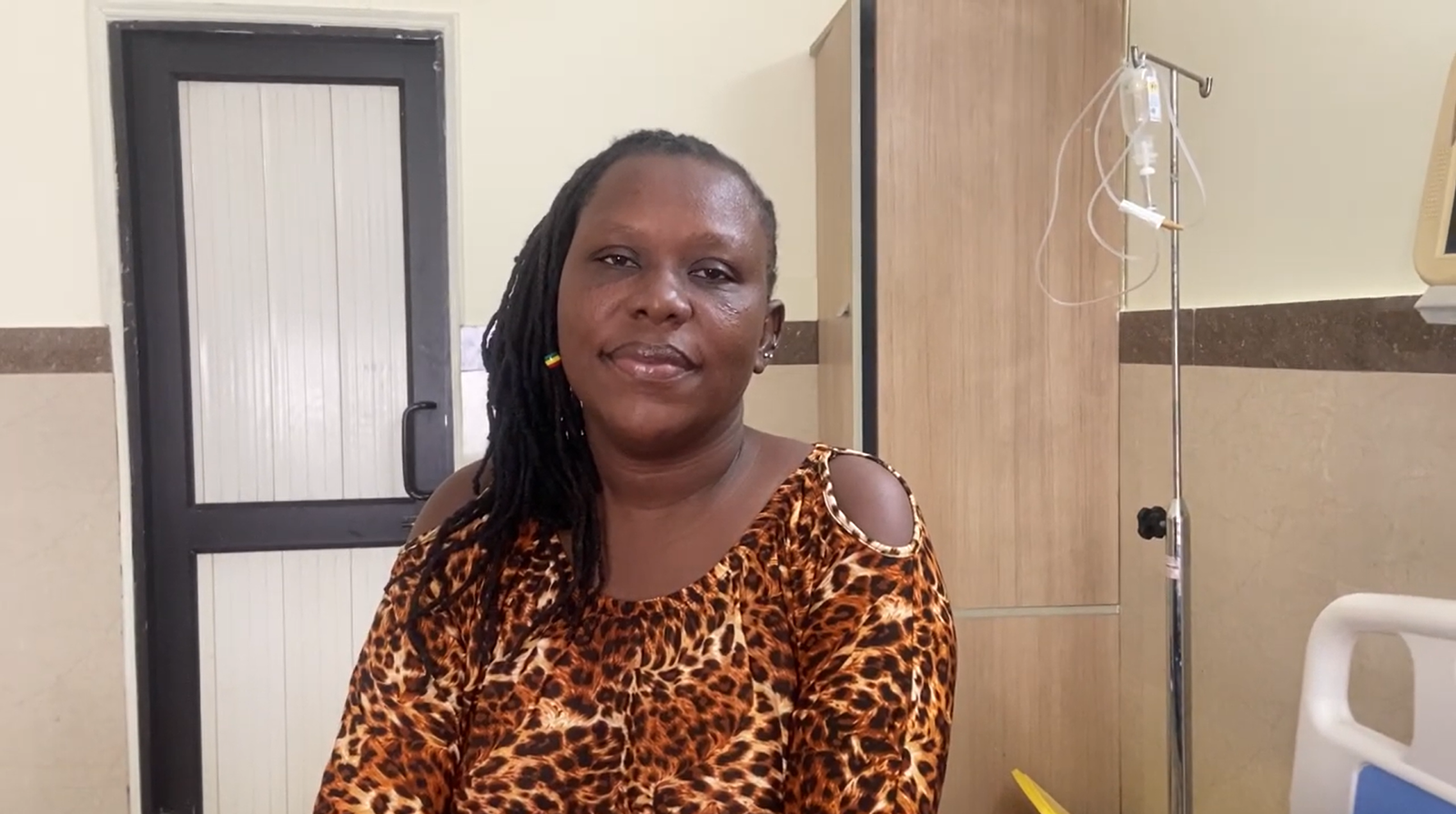
Stem cell therapy for infertility has given us renewed hope. The expertise and..Read More…
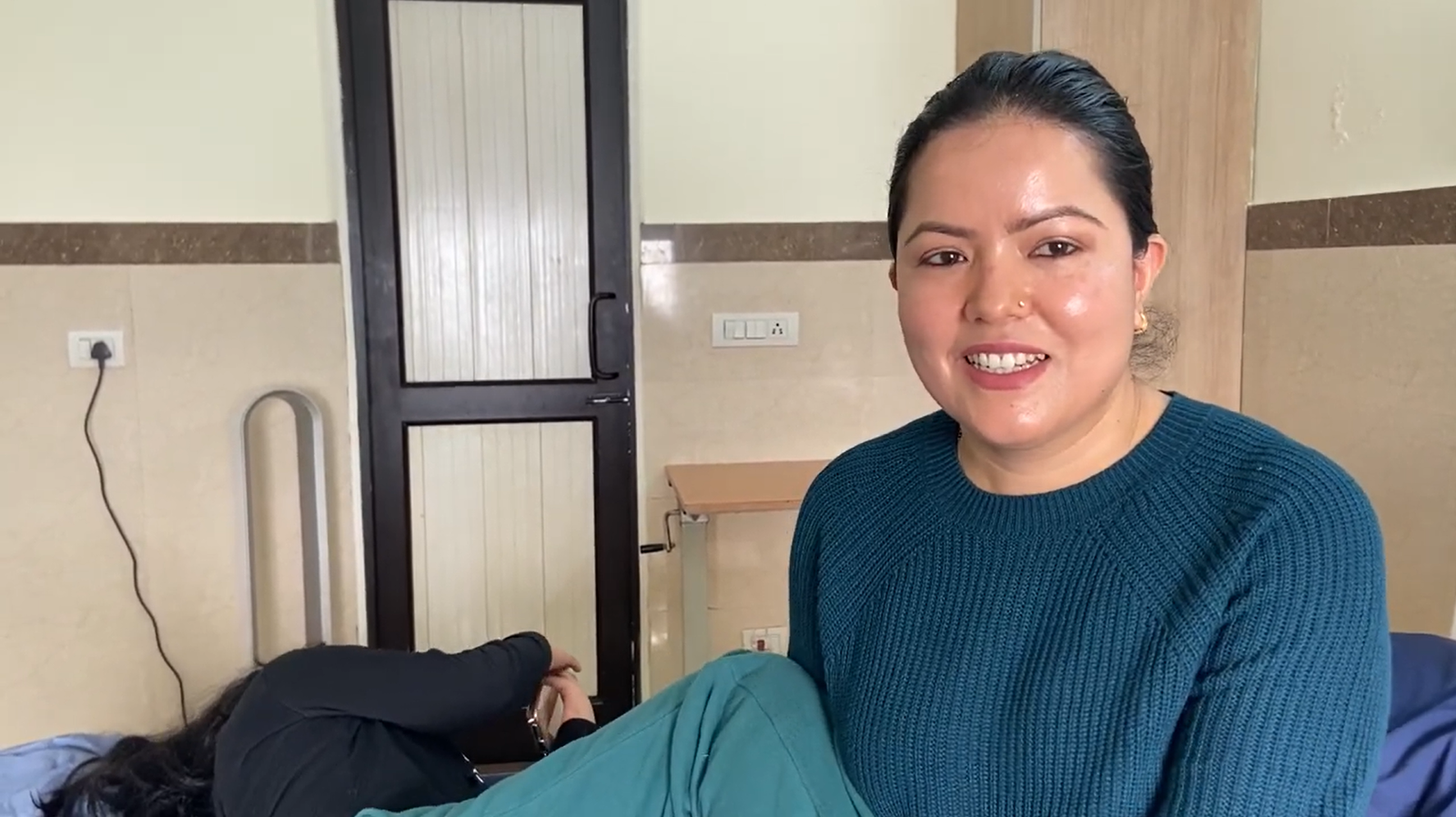
The stem cell treatment for my neurological disease ha.. Read More
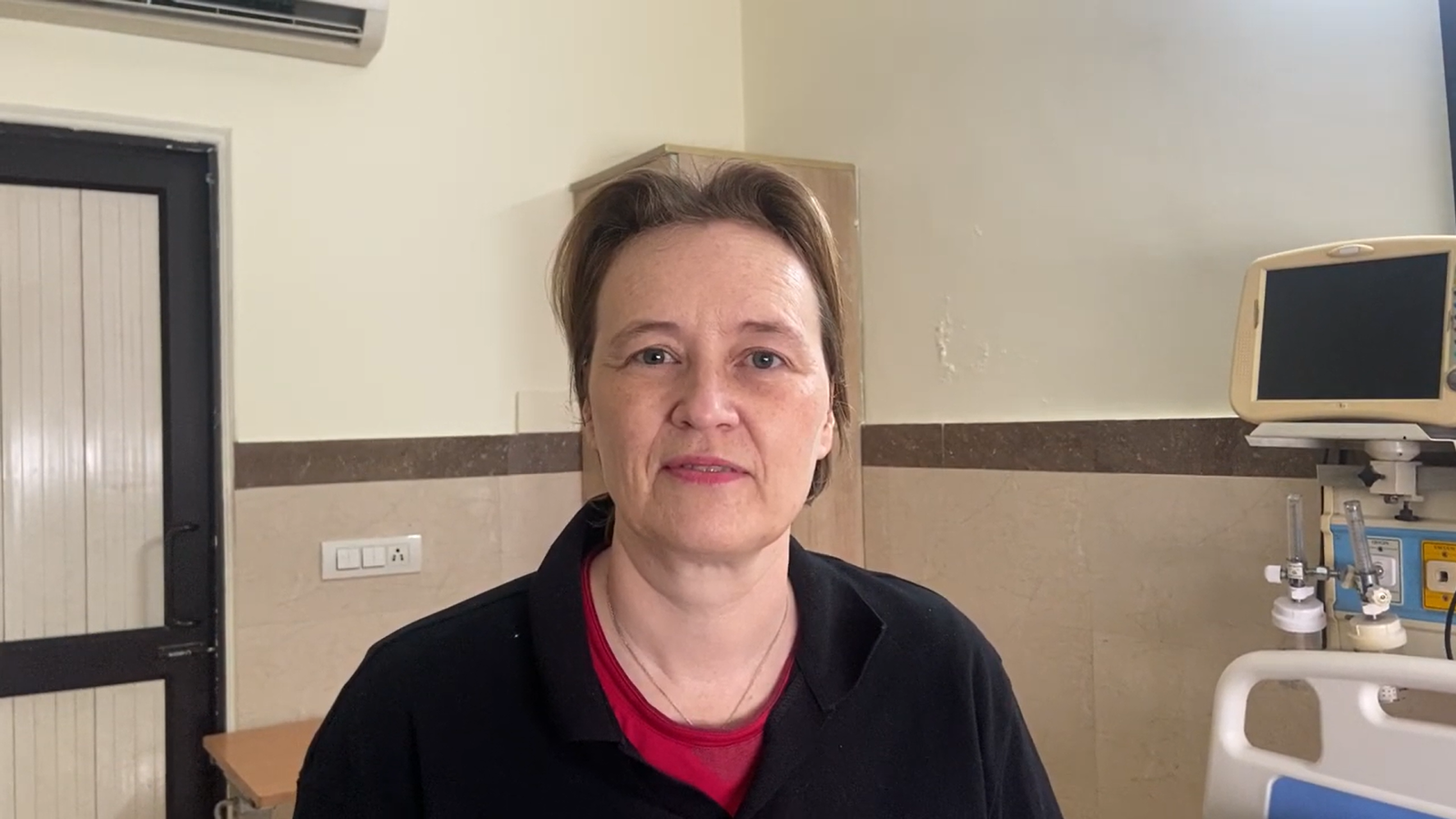
The stem cell treatment for my Chronic Fatigue Syndrome has been transformative… Read more….
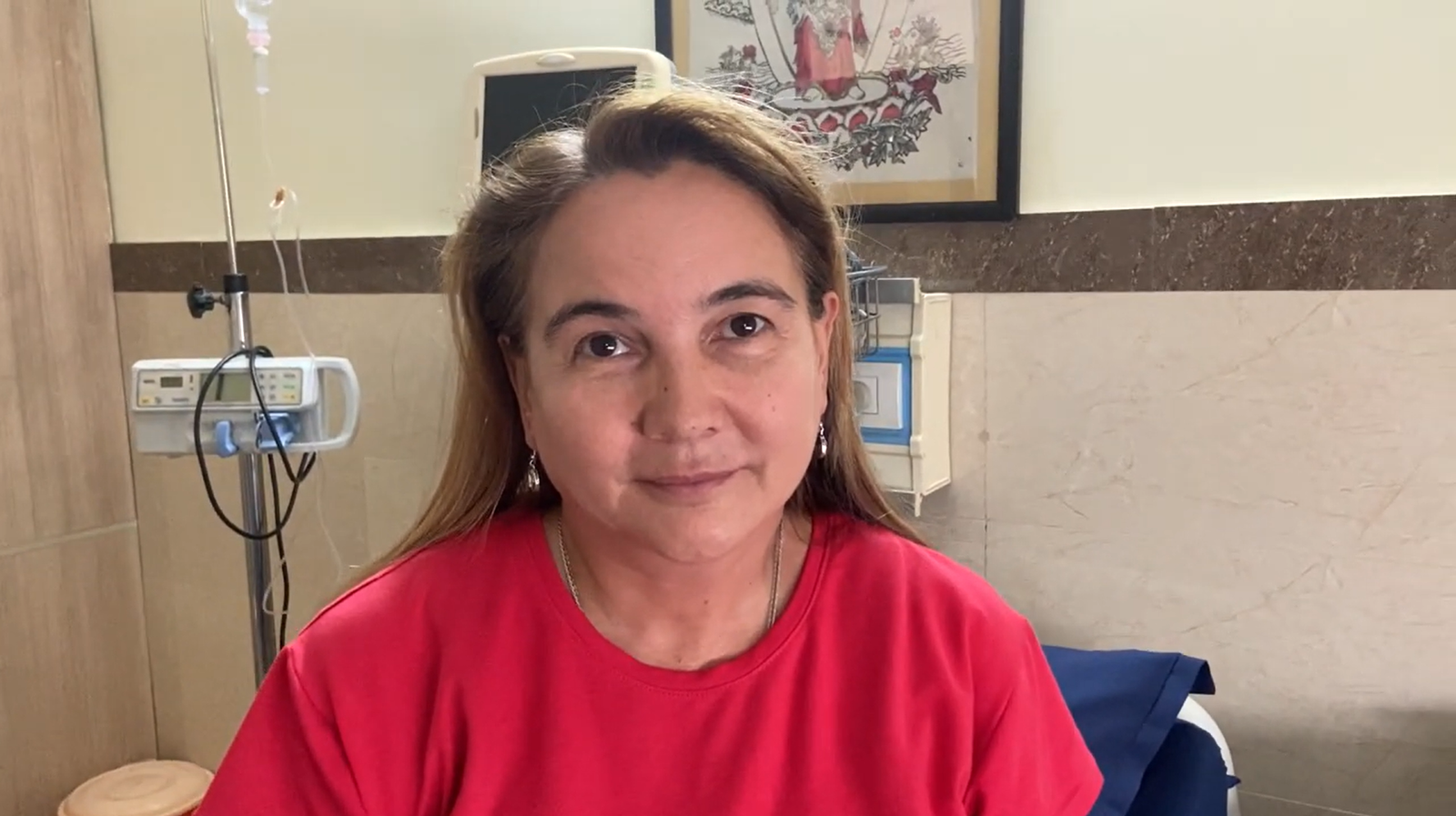
The expert care and attention I received have made managing my condition much easier.. Read
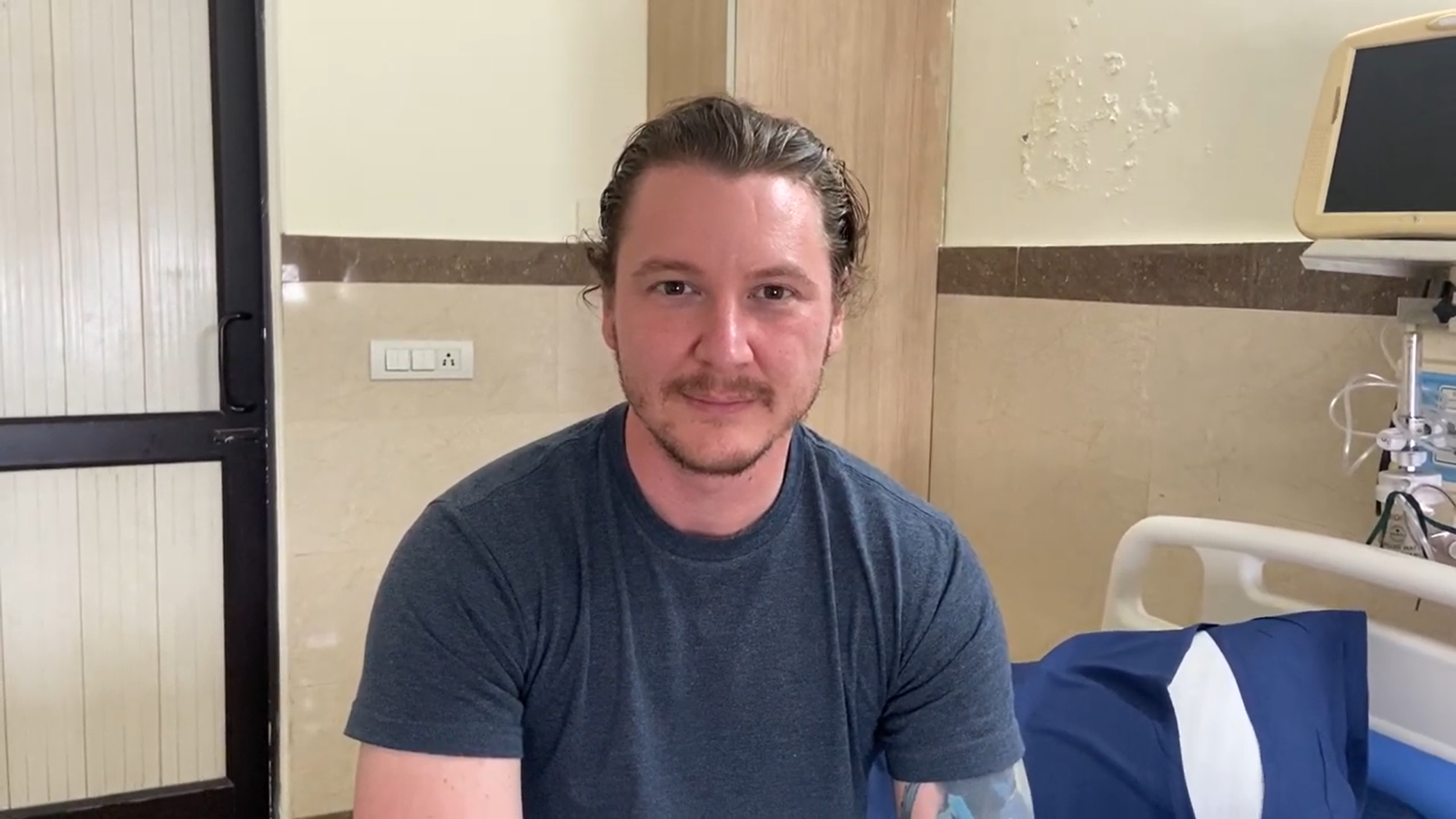
The stem cell treatment for my shoulder pain provided remarkable relief.. Read More…

(+91 ) 7827791242
(+91 ) 7827791242
info@globlaregenex.com
H-23/ B Abul Fazal Enclave, New Delhi - 110025, INDIA